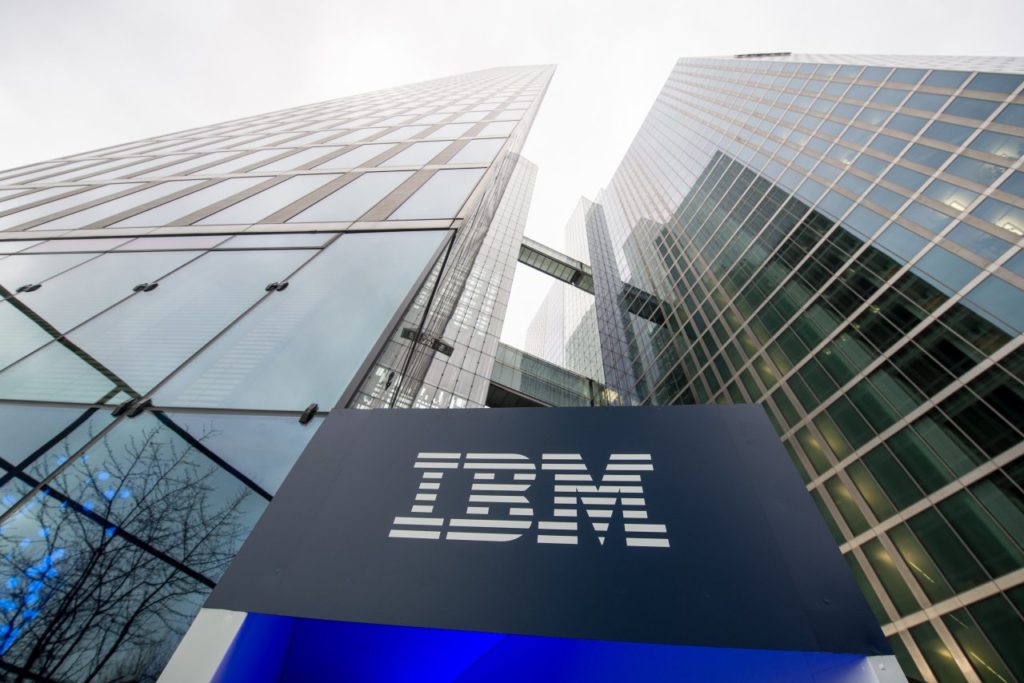As IBM transforms itself to move at the speed of the cloud-based digital economy, the Red Hat acquisition has boosted the company’s third-quarter cloud revenue 14% to $5 billion.
It’s true that 14% cloud-revenue growth in today’s high-growth Cloud Wars is not exactly a cause for party hats and celebration. But for IBM it represents a significant improvement over the past several quarters. A few months ago, in a piece called IBM’s $19-Billion Cloud Business: Where Did the Growth Go?, I laid out the struggles IBM has faced as it attempts to overhaul its massive portfolio of products and services to match up with today’s digital world.
In its first quarterly results that include Red Hat’s contributions, there are some early indicators of how IBM’s $33-billion acquisition is paying off.
- Red Hat revenue growth climbed to 20% in the quarter. IBM CFO James Kavanaugh compared that to Red Hat’s growth in the “mid-teens” a year ago before IBM announced its intention to acquire Red Hat. (For more on IBM’s huge wager on Red Hat, please check out IBM’s $33-Billion Bet on Red Hat: The Stakes Are Enormous.)
- The companywide cloud revenue of $5 billion broke out this way: in the Cloud and Cognitive Software segment, cloud revenue was up 63% to $1.1 billion; in Global Business Services, it was up 10% to $1.3 billion; in Global Technology Services, it was up 10% to $2.1 billion; and in Systems, it was down 19% to $500 million.
IBM and Red Hat: The 30,000-Foot View
During his prepared remarks to open the Oct. 16 Q3 earnings call, Kavanaugh offered a broad perspective of the Red Hat impact.
This quarter, Red Hat’s Infrastructure business, which is predominantly RHEL, had double-digit growth and continued to take share. This is a great proof point of the continued importance of Linux as the foundation for enterprise workloads in a hybrid cloud environment.
And momentum continued in Application Development and emerging technologies, driven by both OpenShift and Ansible. We’re adding new OpenShift clients and expanding Red Hat adoption in existing clients. For example, in the third quarter, IBM helped Red Hat expand its footprint at Visa in support of the client’s strategy of accelerating technology platform innovation, using open source solutions.
Kavanaugh repeatedly called the Red Hat results and ramifications “great.” He also emphasized how Red Hat positions IBM ideally for the next phase of growth in the cloud business. Namely, customers moving their mission-critical workloads to the cloud.
IBM and Red Hat: Promising Signs for the Future
In that context, a couple of details about IBM’s Global Technology Services business jumped out.
- GTS currently has an $80-billion backlog, Kavanaugh said, and cloud now accounts for 40% of that backlog, or $32 billion.
- In Q3, cloud-business signings within GTS grew more than 60%, indicating a nice acceleration for the future.
And in a comment about the ongoing overhaul of the huge GTS unit, Kavanaugh said that IBM is “repositioning the portfolio with continued investment in cloud.”
That comment could apply across the entire company as well. As Kavanaugh stated early on in his prepared remarks:
And so IBM’s performance continues to be led by areas that help our clients with their digital transformations and journeys to cloud. Across our segments, our cloud revenue growth accelerated to 14%, and IBM’s cloud revenue over the last year is now over $20 billion.
We’re entering the next chapter of cloud, which will be driven by mission-critical workloads. Enterprise clients will need to securely deploy, run and manage these workloads across on-prem, private and public cloud environments. These hybrid multi-cloud environments will be based on a foundation of Linux with containers and Kubernetes.
IBM and Red Hat: The Bottom Line
From there, Kavanaugh went on to outline Red Hat’s product lineup and capabilities. He spoke to their impact on everything at IBM from private and public clouds to mainframes, applications, infrastructure and more.
“We have standardized on Red Hat OpenShift as our hybrid cloud platform, and we’ve modernized our software portfolio so that it can run on all private and public clouds. We’ve announced OpenShift on IBM Cloud and on IBM Z, and we’ve introduced consulting and technology services for Red Hat to capitalize on our expertise in digital reinventions and our leadership position in managing mission-critical workloads,” Kavanaugh said.
Going forward, IBM will need to keep cranking up the growth rate. The company will also need to find ways to articulate the unique and high-value contributions of Red Hat.
Otherwise, the truly high-growth competitors in the Cloud Wars will surely find ways to develop and deliver those strategic solutions before IBM’s able to do so. And if that happens, IBM’s growth challenges will only intensify.
Cloud Wars
Top 10 Rankings — Oct. 14, 2019
| 1. Microsoft — Q1 cloud revenue will top SFDC, SAP, Oracle & Google *combined* |
| 2. Amazon — AWS Q2 revenue jumps 37% to $8.38B, cites broad innovation in ML |
| 3. Salesforce —Is Benioff planning to switch more databases from Oracle to AWS? |
| 4. SAP — McDermott steps down for new adventures after posting great Q3 numbers |
| 5. Oracle — Ellison: Autonomous DB growth “so extraordinary, we’re not forecasting” |
| 6. Google — Q2 cloud rev. tops $2B; Kurian’s customer focus leads jump from #7 to #6 |
| 7. IBM — Q3 numbers will hint at Rometty’s $33-billion bet on Red Hat |
| 8. Workday — CEO Aneel Bhusri says Oracle, SAP can’t match it in Fortune 100 mkt. |
| 9. Accenture — Up from #10 on ties w/ MSFT AWS GOOG; $9B cloud biz up 23% in ‘18 |
| 10. ServiceNow — Donahoe looks to Microsoft & mobile to drive next growth wave |
Disclosure: at the time of this writing, IBM was a client of Evans Strategic Communications LLC.
Subscribe to the Cloud Wars Newsletter for in-depth analysis of the major cloud vendors from the perspective of business customers. It’s free, it’s exclusive, and it’s great!








